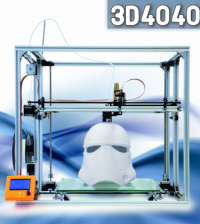- makeITcircular 2024 content launched – Part of Maker Faire Rome 2024Posted 2 weeks ago
- Application For Maker Faire Rome 2024: Deadline June 20thPosted 2 months ago
- Building a 3D Digital Clock with ArduinoPosted 7 months ago
- Creating a controller for Minecraft with realistic body movements using ArduinoPosted 7 months ago
- Snowflake with ArduinoPosted 8 months ago
- Holographic Christmas TreePosted 8 months ago
- Segstick: Build Your Own Self-Balancing Vehicle in Just 2 Days with ArduinoPosted 8 months ago
- ZSWatch: An Open-Source Smartwatch Project Based on the Zephyr Operating SystemPosted 9 months ago
- What is IoT and which devices to usePosted 9 months ago
- Maker Faire Rome Unveils Thrilling “Padel Smash Future” Pavilion for Sports EnthusiastsPosted 10 months ago
A Simple, Low-Cost Conductive Composite Material for 3D Printing of Electronic Sensors
3D printing technology can produce complex objects directly from computer aided digital designs. The technology has traditionally been used by large companies to produce fit and form concept prototypes (‘rapid prototyping’) before production. In recent years however there has been a move to adopt the technology as full-scale manufacturing solution. The advent of low-cost, desktop 3D printers such as the RepRap and Fab@Home has meant a wider user base are now able to have access to desktop manufacturing platforms enabling them to produce highly customised products for personal use and sale. This uptake in usage has been coupled with a demand for printing technology and materials able to print functional elements such as electronic sensors. Here we present formulation of a simple conductive thermoplastic composite we term ‘carbomorph’ and demonstrate how it can be used in an unmodified low-cost 3D printer to print electronic sensors able to sense mechanical flexing and capacitance changes. We show how this capability can be used to produce custom sensing devices and user interface devices along with printed objects with embedded sensing capability. This advance in low-cost 3D printing with offer a new paradigm in the 3D printing field with printed sensors and electronics embedded inside 3D printed objects in a single build process without requiring complex or expensive materials incorporating additives such as carbon nanotubes.
via PLOS ONE: A Simple, Low-Cost Conductive Composite Material for 3D Printing of Electronic Sensors.
Interesting scientific advancements in 3D printing of conductive materials. Something you may want to experiment!















